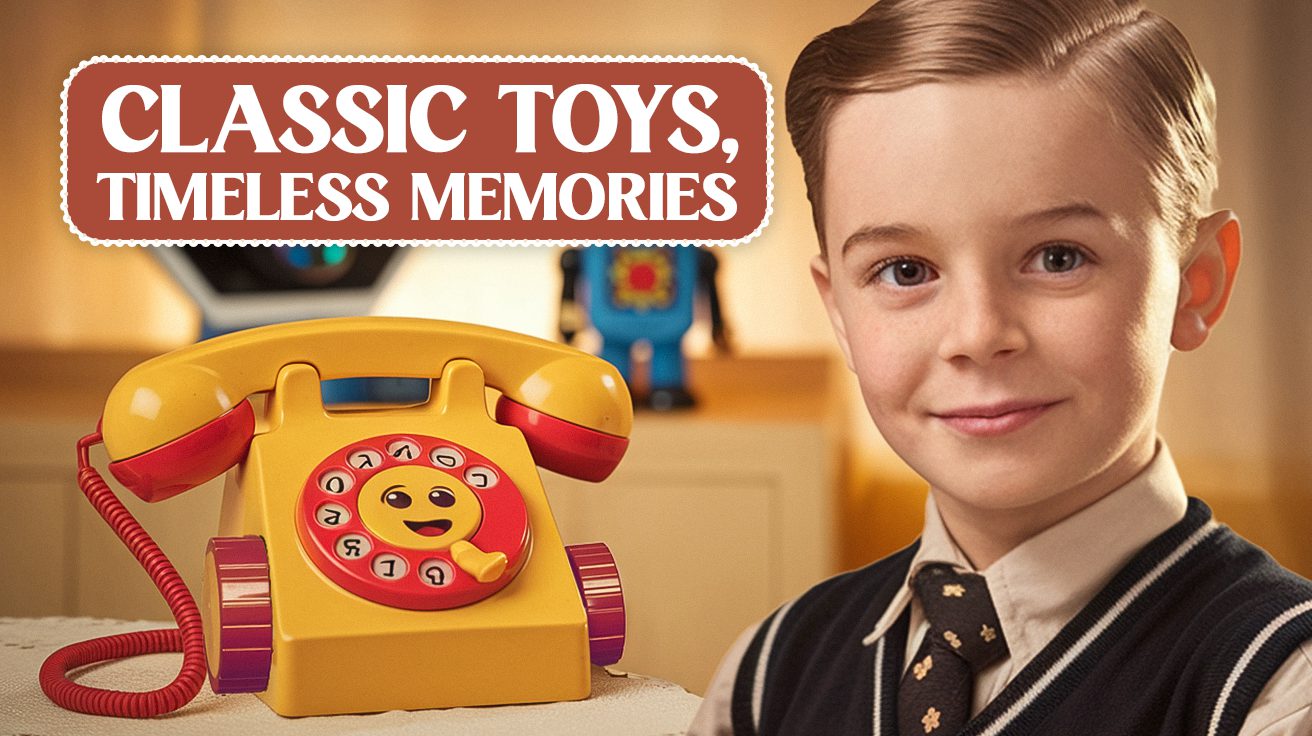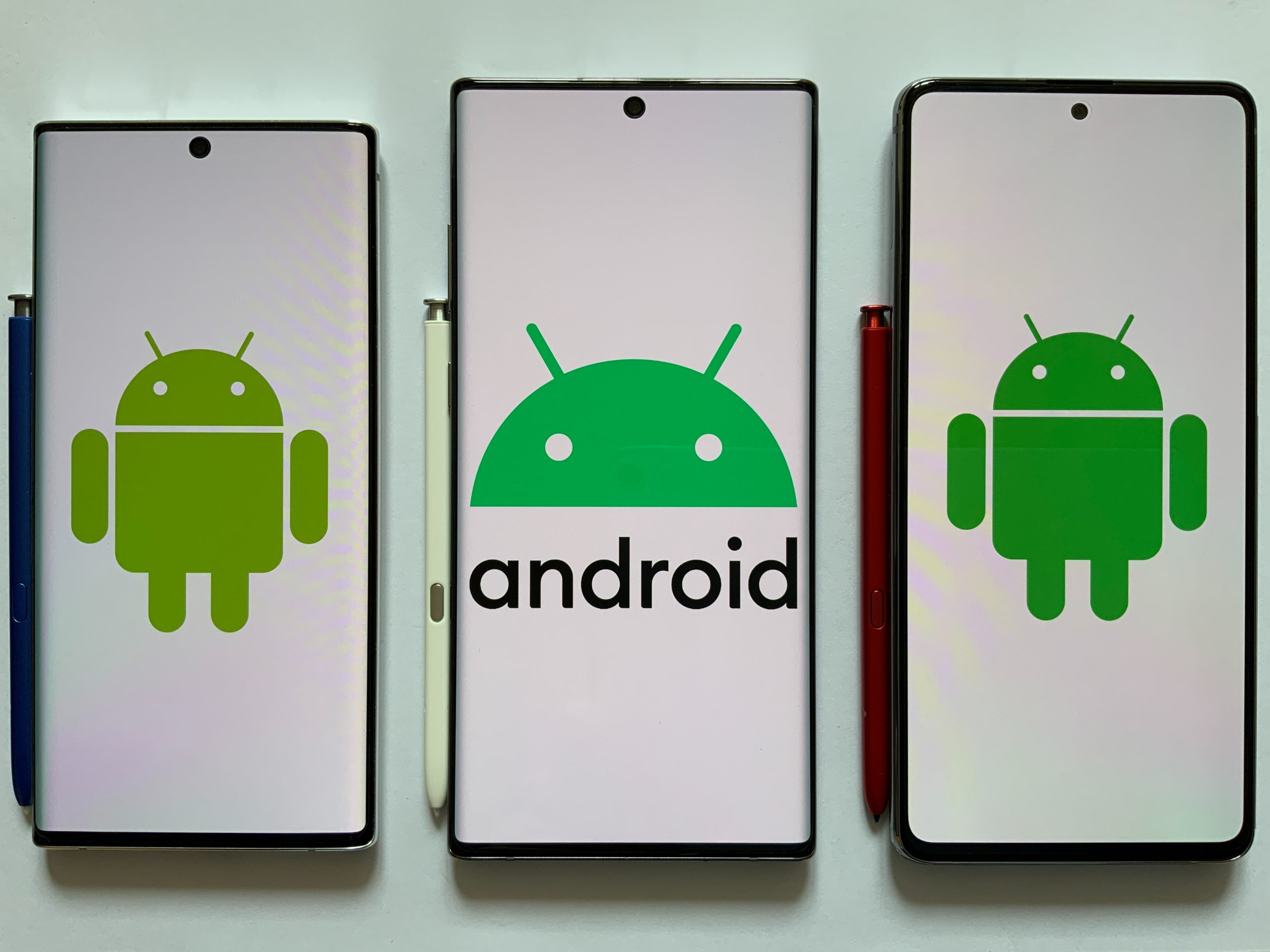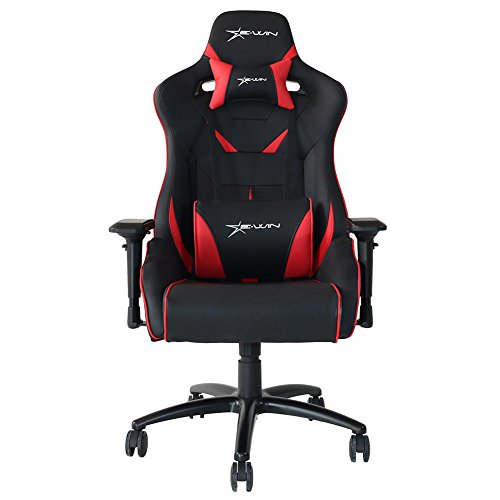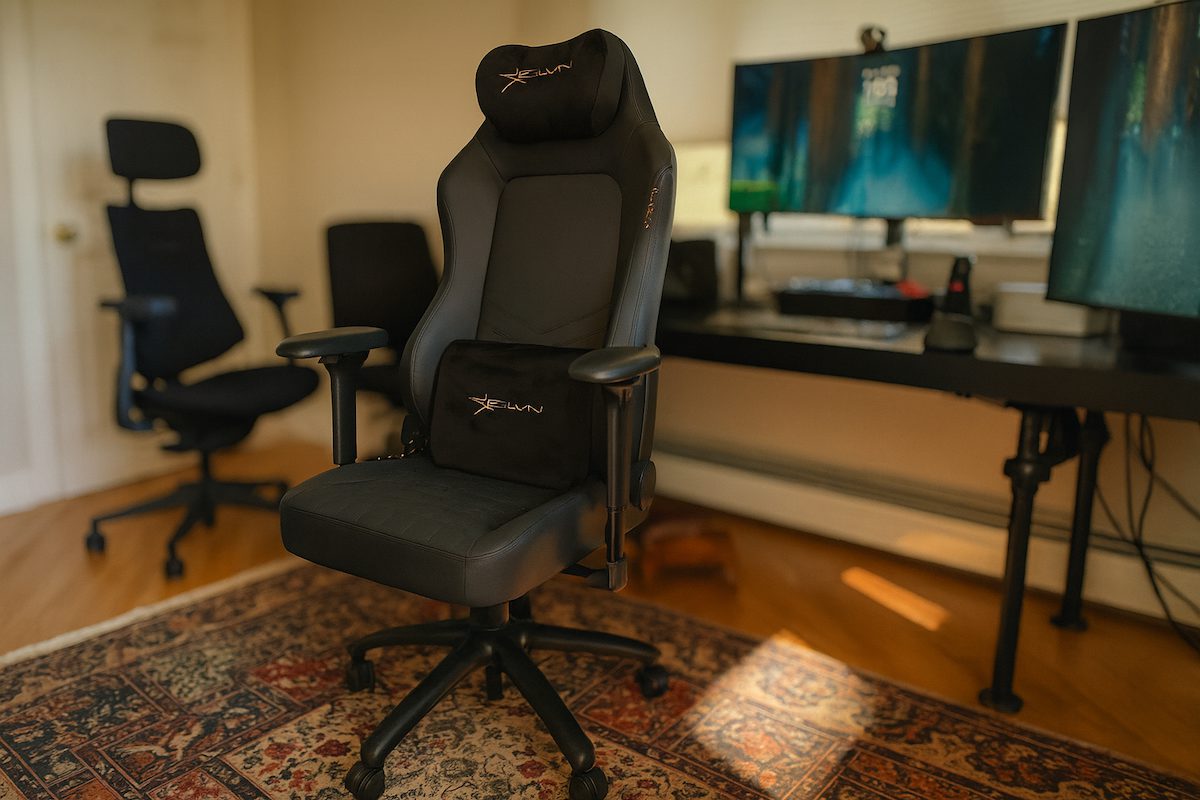Kids today will never understand the magic of 1960s playtime. Before screens dominated childhood, physical toys sparked imagination in ways apps never could. G.I. Joe invented the “action figure” category to let boys play with dolls. The Easy-Bake Oven turned light bulbs into working bakeries. Transistor radios gave teens unprecedented freedom from adult supervision. These ingenious inventions solved the universal problem of childhood boredom.
Join us on this nostalgic journey through 25 iconic toys that shaped a generation’s play patterns and created memories that have lasted a lifetime.
25. Rock’em Sock’em Robots
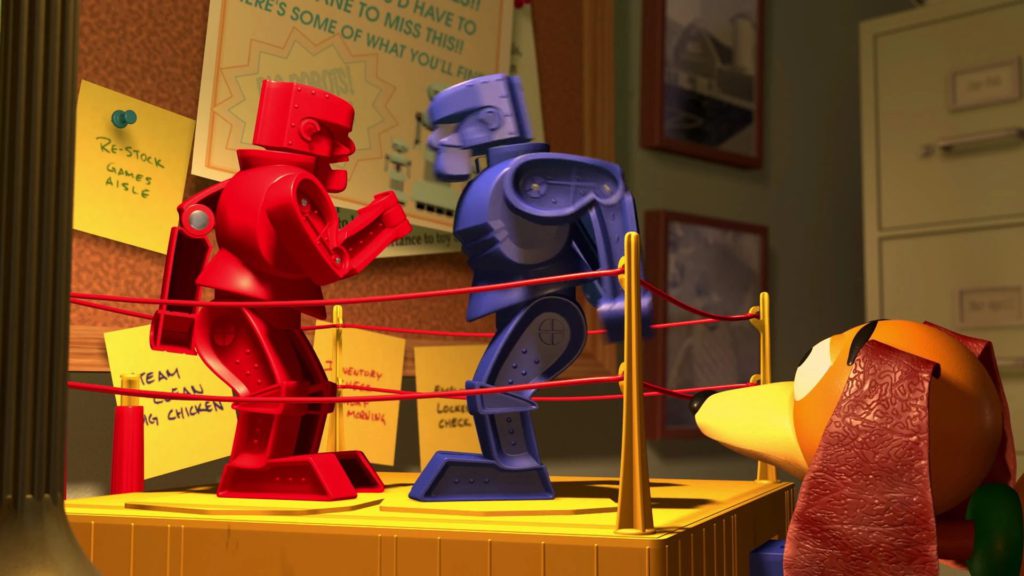
Two-player games often ended in arguments, but Rock’em Sock’em Robots settled disputes with a satisfying head-popping knockout. The Marx Toy Company’s simple concept—control plastic boxers and try to knock your opponent’s head off—created instant competition. It was one of many obsolete things from the 60s that still holds a special place in pop culture. Red Rocker against Blue Bomber in a plastic ring became the perfect way to settle playground disputes without actual fighting. The game sold millions of units in its first few years, though parents often complained about the constant clicking noise. Despite the introduction of countless electronic games since, nothing quite matches the visceral satisfaction of physically knocking your opponent’s block off.
24. Kenner’s Give-A-Show Projector
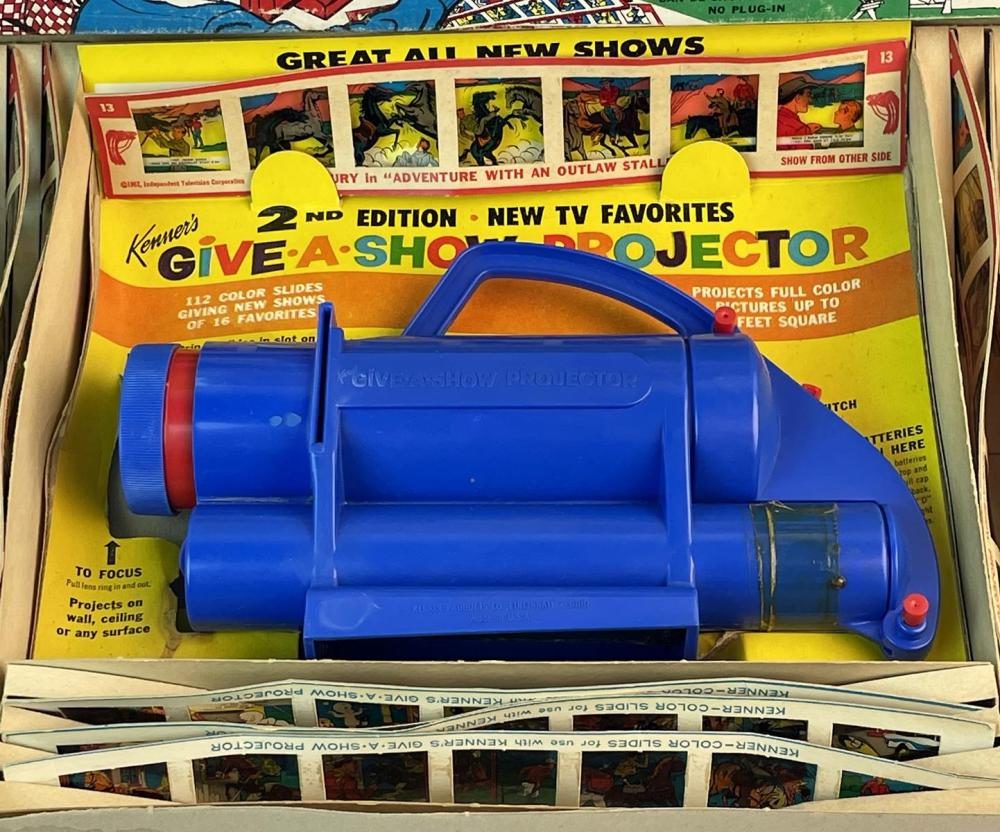
Long before streaming services, children gathered in darkened bedrooms as Kenner’s Give-A-Show Projector transformed blank walls into miniature movie theaters. This battery-powered plastic projector let kids display their favorite cartoon characters on bedroom walls, projecting images up to four square feet in size. The real magic was in the trading—kids swapped slide strips featuring popular TV shows to expand their collections. Introduced in 1959, the projector remained popular for over 20 years, helping establish Kenner as a major toy company. On rainy nights across America, these simple projectors turned ordinary bedroom walls into gateways to animated adventures, no batteries or Wi-Fi required.
23. View-Master 3D Viewer
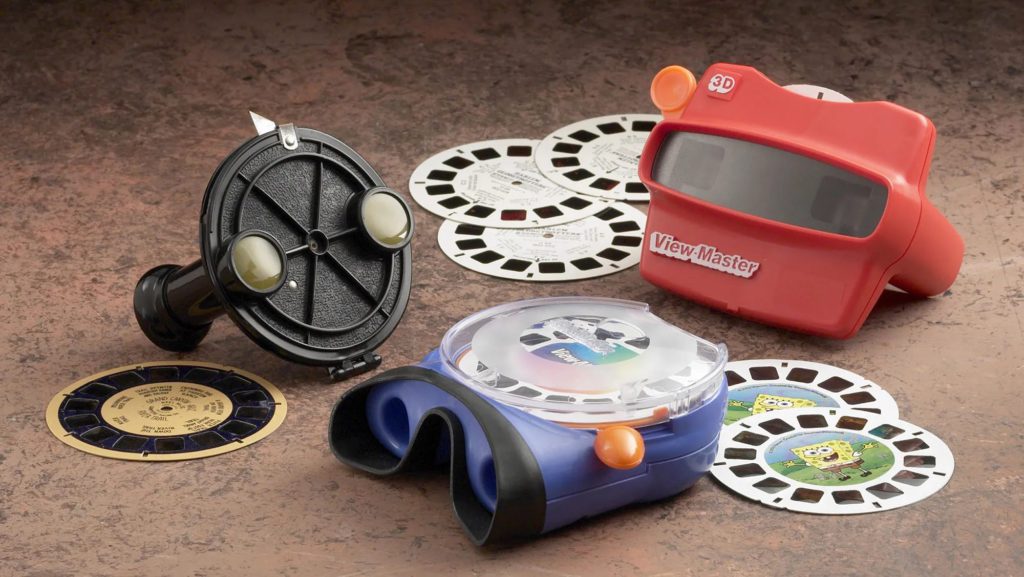
If you craved adventure beyond your neighborhood, the View-Master transported millions of children to exotic locations through its iconic red stereoscopic viewer. Kids clicked through circular reels containing seven stereo image pairs, seeing dinosaurs, tourist spots, and cartoon characters jump to life in 3D. With over 1.5 billion reels produced to date, the View-Master has been recognized as an icon of American pop culture. The Smithsonian even features it in their collection, and schools embraced its educational potential. Its mechanical simplicity meant no batteries or maintenance were ever needed, allowing children to escape to three-dimensional worlds with just the click of a lever.
22. Easy-Bake Oven
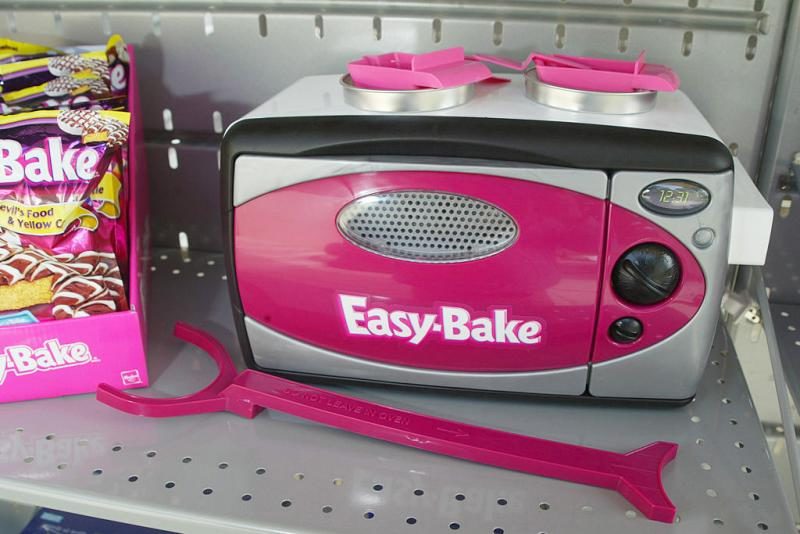
Children forbidden from using the family stove found culinary freedom with the Easy-Bake Oven, which turned a simple light bulb into a fully functioning miniature bakery. Kenner’s compact design used a standard incandescent bulb as a heat source with two baking chambers. Introduced in 1963, it became an instant hit with over 30 million units sold in its first 50 years. Kids mixed tiny packets of cake mix, pushed the pans through the oven, and served up microscopic treats to family members. If you’ve ever noticed a forty-something chef getting misty-eyed about their childhood baking experiences, chances are they’re remembering those tiny, light bulb-warmed cakes from their Easy-Bake days.
21. Lite-Brite
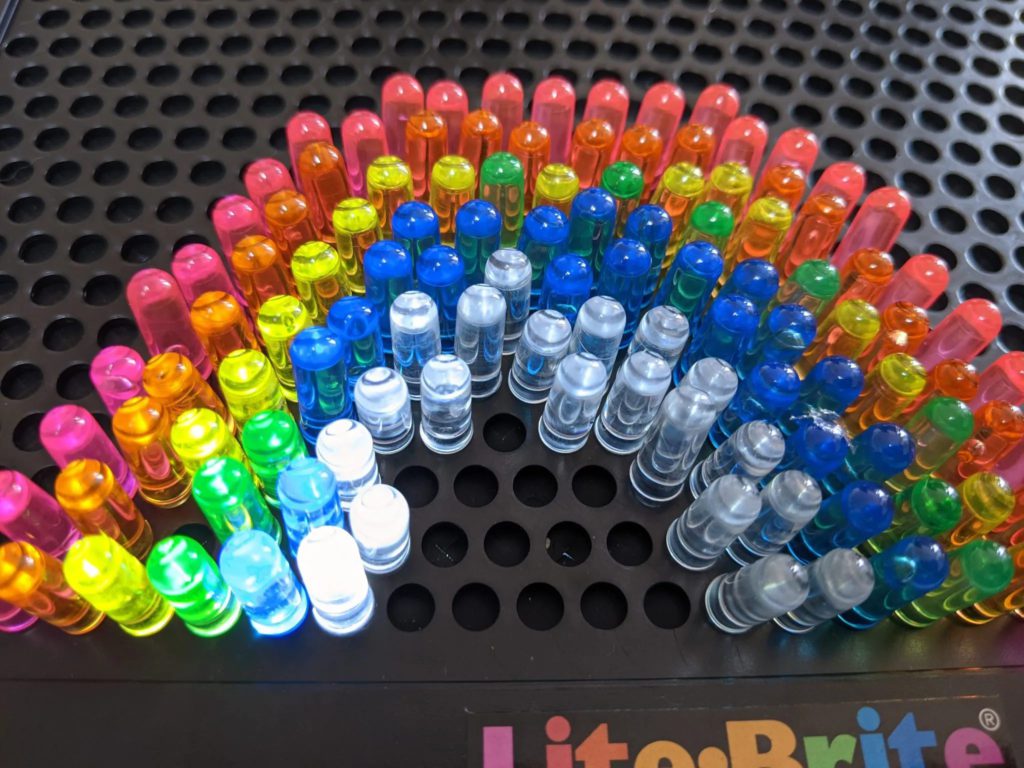
Combining the precision of a pegboard with the magic of backlighting, Lite-Brite transformed simple plastic pegs into glowing masterpieces that looked even more impressive after lights-out. Kids pushed colored translucent pegs through black paper templates, creating glowing pictures lit by a bulb inside the box. The satisfying push of each peg followed by the big reveal when you turned off the lights made this toy a nighttime favorite. While the small parts posed a choking hazard and the bulbs could get hot with extended use, millions of units sold across multiple generations. Parents who bought their children Lite-Brites secretly enjoyed creating their own illuminated masterpieces after bedtime, making it one of the few toys that bridged generational gaps.
20. NFL Electric Football
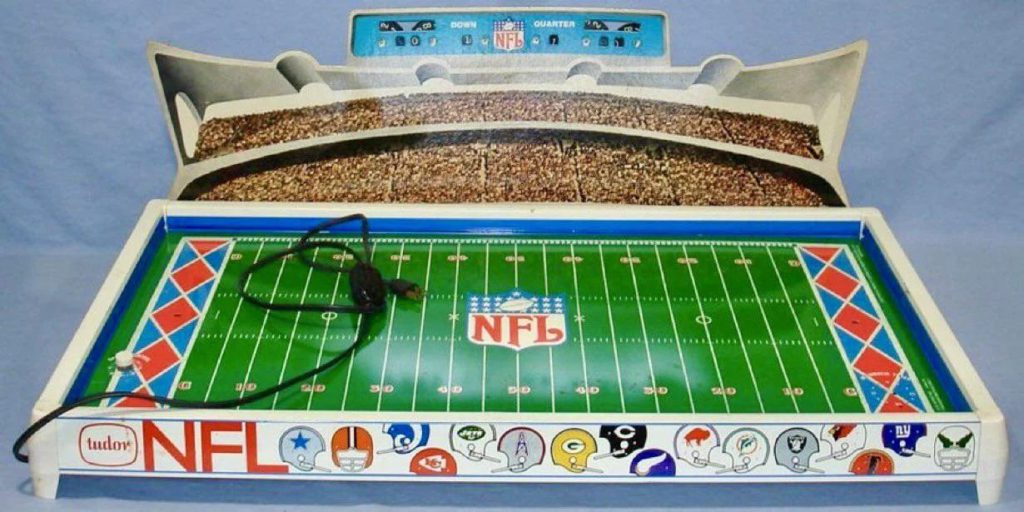
Sports simulation reached living rooms nationwide when NFL Electric Football brought America’s favorite sport to kitchen tables – even if the players rarely followed the intended plays. The metal field vibrated, sending tiny plastic players spinning and zigzagging in random directions that rarely resembled actual football plays. First introduced in the late 1940s, these games reached peak popularity in the 1960s. Despite limited control over player movements, electric football has sold over 70 million units to date. The game introduced innovations like the Triple Threat Quarterback for passing and kicking. The unpredictable movements of plastic players on the vibrating field created a unique gaming experience quite different from today’s precision video games.
19. Thingmaker
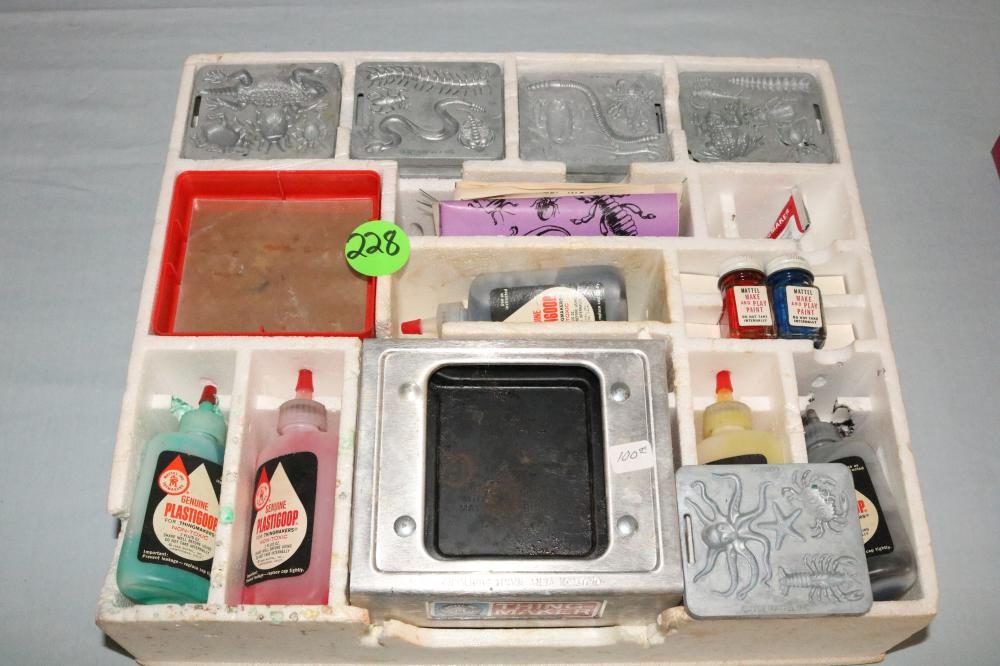
Dangerous by today’s standards but revolutionary for its time, the Thingmaker put toy manufacturing directly into children’s hands with its heating element and liquid Plastigoop. Kids poured liquid “Plastigoop” into metal molds, heated them on a dangerous hot plate, and peeled out rubbery bugs, monsters, or flowers. It encouraged creativity and hands-on crafting, though it required adult supervision due to the heat. Kids mostly created rubbery insects and arachnids, playing with their creations for hours. The distinctive smell of cooking Plastigoop remains permanently etched in the memory of anyone who ever created their own toy army of rubber creatures.
18. G.I. Joe Action Figures
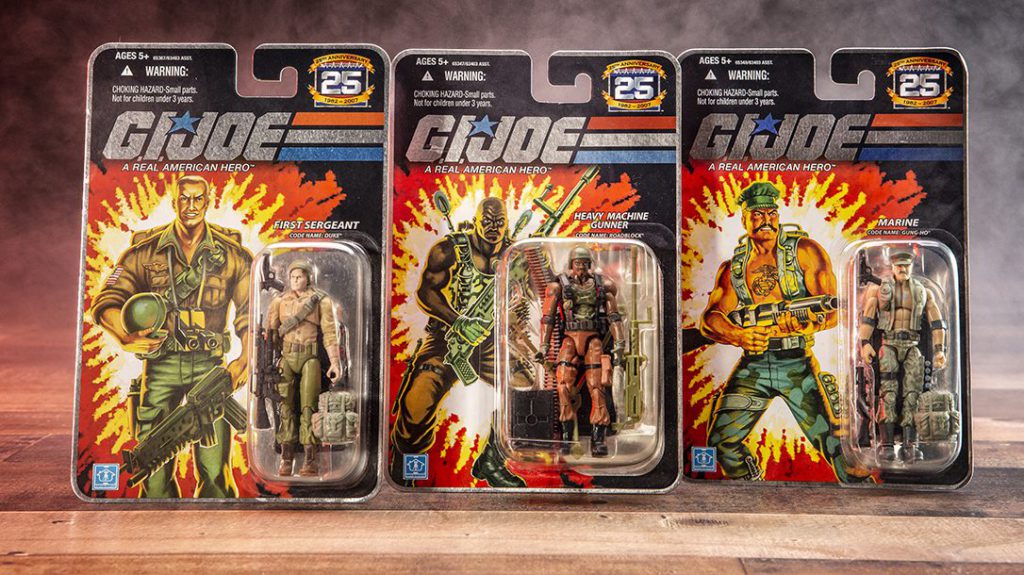
Action figures didn’t exist before 1964, when Hasbro strategically created G.I. Joe as the first “action figure” – cleverly marketing dolls to boys without using the taboo d-word. At 11.5 inches tall with posable limbs and realistic uniforms, these weren’t “dolls” but “action figures”—a term that let boys play with dolls without social stigma. As the first action figure with movable parts, G.I. Joe encouraged imaginative play and storytelling. A popular television show further boosted collectibility. While initially controversial for being marketed as dolls, G.I. Joe became highly successful and remains valuable to collectors. The clever rebranding strategy that let boys enjoy “dolls” without social judgment revealed how marketing language could reshape cultural taboos.
17. Etch A Sketch
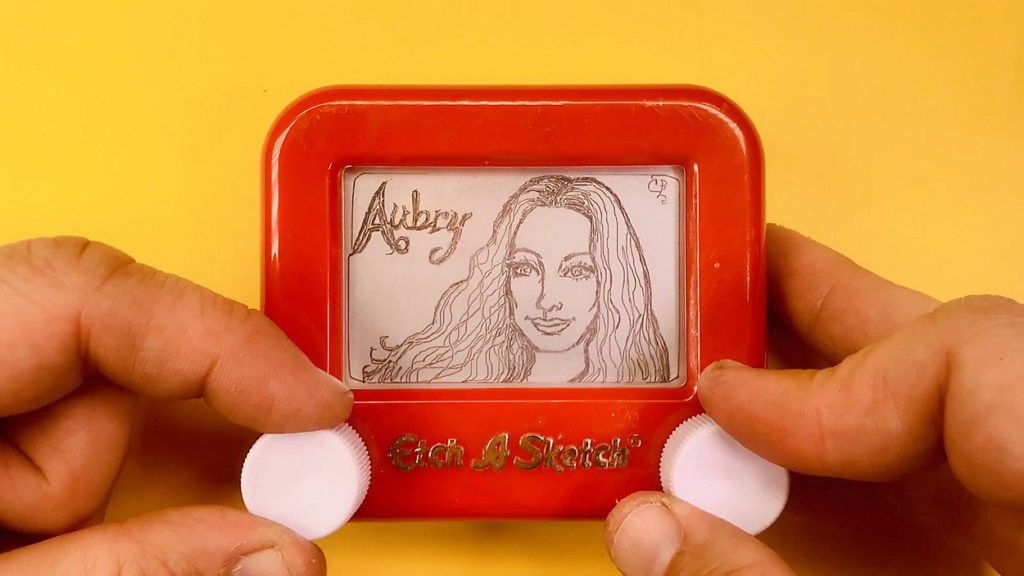
While artists struggled with permanent mistakes, the Etch A Sketch offered the perfect solution: just shake to start again. Two knobs controlled horizontal and vertical lines on a screen coated with aluminum powder. Making anything beyond stairs and boxes required serious skill. The satisfying shake to erase meant mistakes were never permanent, encouraging creativity without mess. Despite its limitations for precise drawings compared to modern digital tools, the Etch A Sketch became an iconic toy that remains popular today with various updated versions. Anyone who’s ever created a masterpiece only to have someone bump the toy before it could be shown off learned an important life lesson about impermanence.
16. Talking Barbie
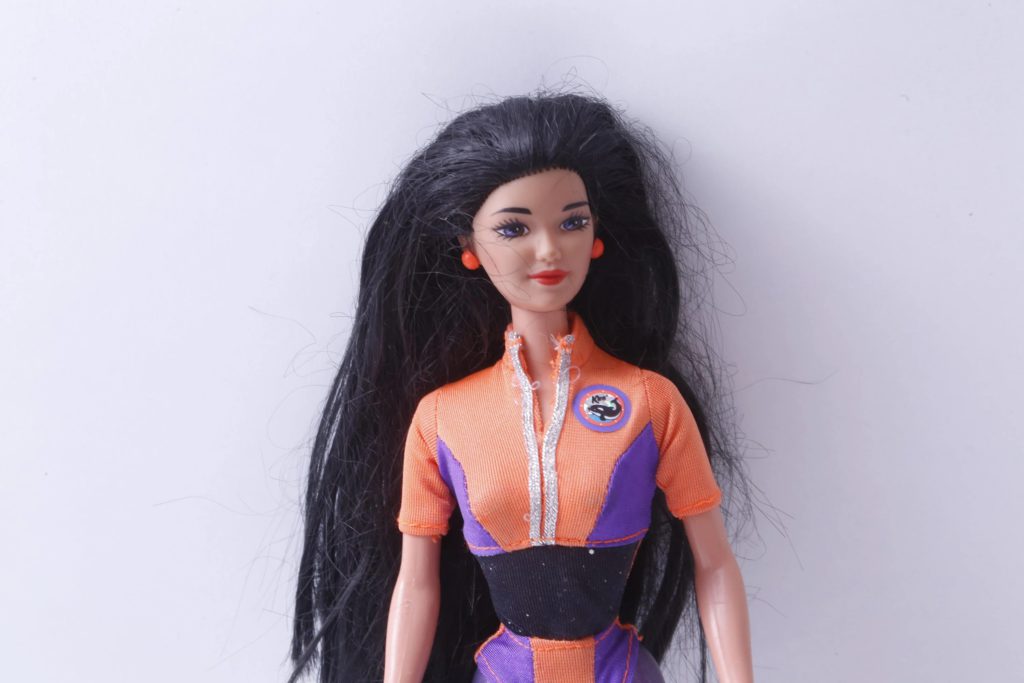
If you thought dolls couldn’t get more interactive, Mattel proved you wrong when Talking Barbie joined their lineup in 1968 with pre-recorded phrases. Pull the string and she spoke, adding a new dimension to imaginative play. While her vocabulary was limited and some users found the speech feature annoying, Talking Barbie set a precedent for future interactive dolls. As the first doll with speech capabilities, she encouraged imaginative play and storytelling, becoming a fan favorite for many children. Though today’s AI-driven toys can hold complex conversations, there was something magical about that mechanical voice that made an entire generation of children believe their dolls were truly talking to them.
15. Transistor Radio
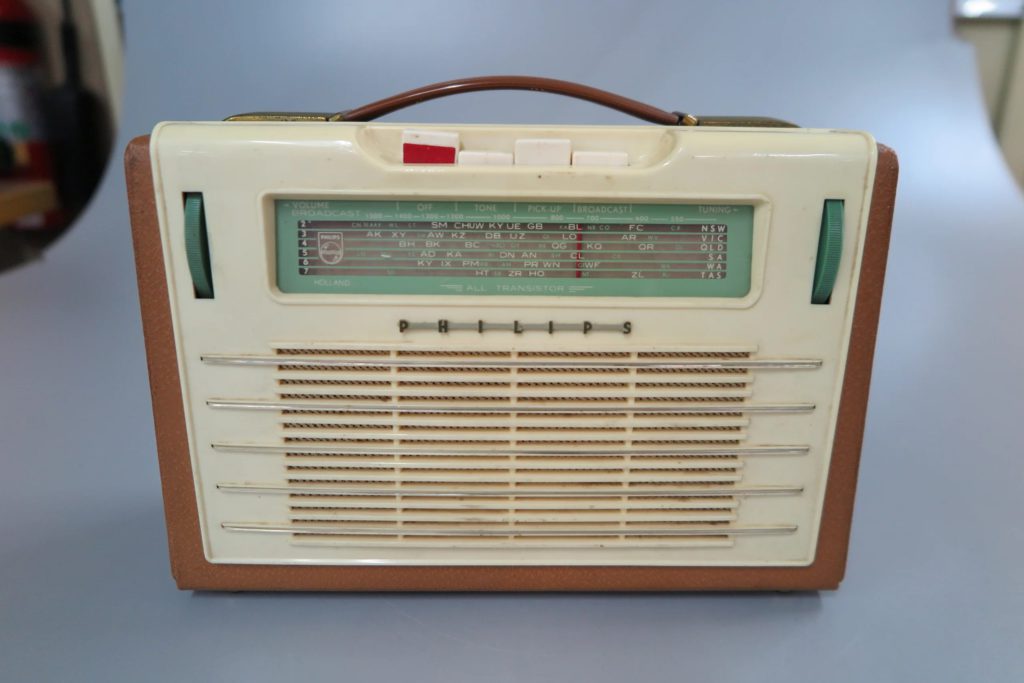
Parents worried about rock music’s influence, but the transistor radio gave teens unprecedented audio freedom and privacy. These devices let children listen to music, baseball games, and news without adult supervision. Compared to tube radios, transistors had a compact size with durable metal or plastic cases and simple tuning dials. Every home owned one in the 1960s, contributing to the globalization of news and entertainment. While they eventually faced limited reception quality in some areas and were replaced by more advanced technologies. For teenagers in the 1960s, these pocket-sized devices weren’t just entertainment—they were revolutionary tools of independence, connecting them to counterculture movements and music their parents didn’t understand.
14. Spirograph
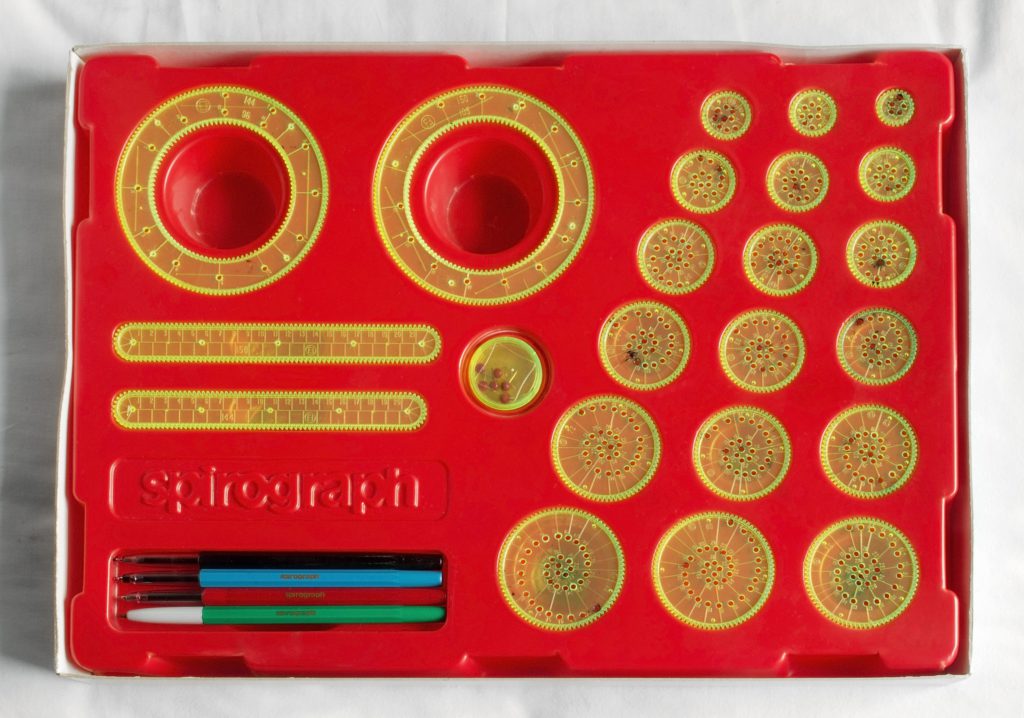
Turning mathematical principles into artistic expression, Spirograph made geometry fun with its system of interlocking plastic gears. Kids placed pens in gear holes and traced hypnotic geometric designs. The resulting complex looping patterns resembled elegant floral designs, looking professional enough to hang on refrigerators. It encouraged creativity and geometric understanding, producing intricate designs with minimal effort. While limited to specific design patterns and potentially messy with ink or markers, Spirograph remains popular today with various updates. Math teachers who struggled to engage students found Spirograph bridged the gap between abstract mathematical principles and beautiful visual results, making it a rare toy that parents purchased without hesitation.
13. Johnny 7 O.M.A.
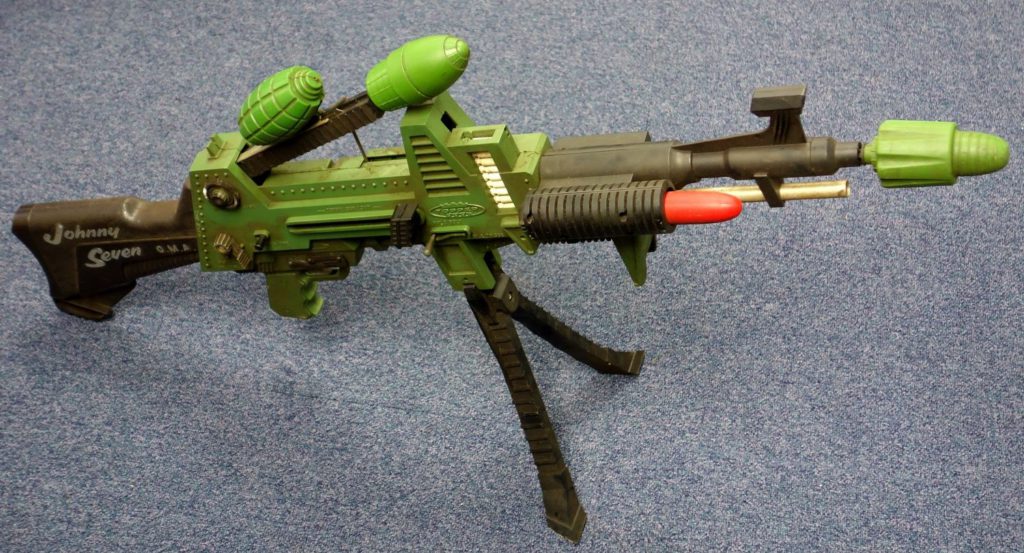
For kids who couldn’t decide which weapon was coolest, Johnny 7 One Man Army solved the problem by combining seven into a single massive toy. Topper Toys designed it in 1964, creating a comprehensive toy soldier kit with multiple functions. At nearly 3 feet long, this combination grenade launcher, anti-tank rocket, Tommy gun, rifle, pistol, bayonet, and bullet-firing gun was both impressive and completely impractical to carry around. While some components were fragile or posed safety concerns due to small parts, it remained popular among children for its extensive play options. For neighborhood war games, possessing a Johnny 7 instantly promoted any child to general status, though carrying the unwieldy three-foot arsenal often resulted in strategic retreats for snack breaks.
12. Captain Action Doll
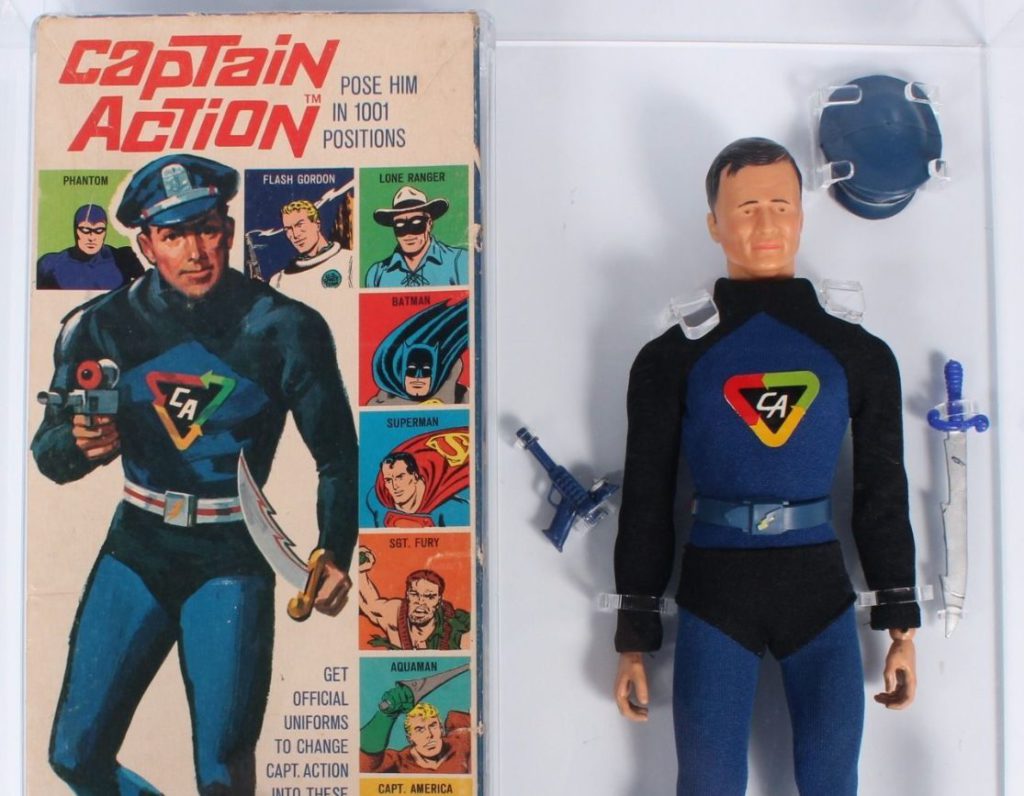
When superhero toys became a must-have, Captain Action answered the call with an ingenious twist – one doll that could transform into any comic book hero. Ideal Toy created a single doll that transformed easily, with the 12-inch figure coming with a basic blue uniform and cap. Add-on kits transformed him into Batman, Superman, Spider-Man, or other licensed characters. It encouraged imaginative play with multiple characters and offered versatility with interchangeable costumes. While some costumes were flimsy or prone to loss with limited availability of certain options, Captain Action set a precedent for future action figures with costumes. Parents appreciated the economic efficiency of buying just one doll with multiple costume sets rather than separate figures for each character—until they had to replace those tiny lost accessories.
11. Super Ball

Bouncing to unprecedented heights, the Super Ball introduced playground physics lessons when Wamo launched it in 1965. Made from a new material called Zectron, this exciting bouncy toy fascinated children and adults alike with its remarkable high bouncing capabilities. Marketed as the highest bouncing rubber ball on the market, it captivated everyone’s attention. While some users reported it was too bouncy, potentially causing damage, the Super Ball initially gained popularity for its novelty and encouraged active play. The toy’s success even inspired the naming of the “Super Bowl” when Kansas City Chiefs owner Lamar Hunt watched his children playing with one.
10. 6 Million Dollar Man
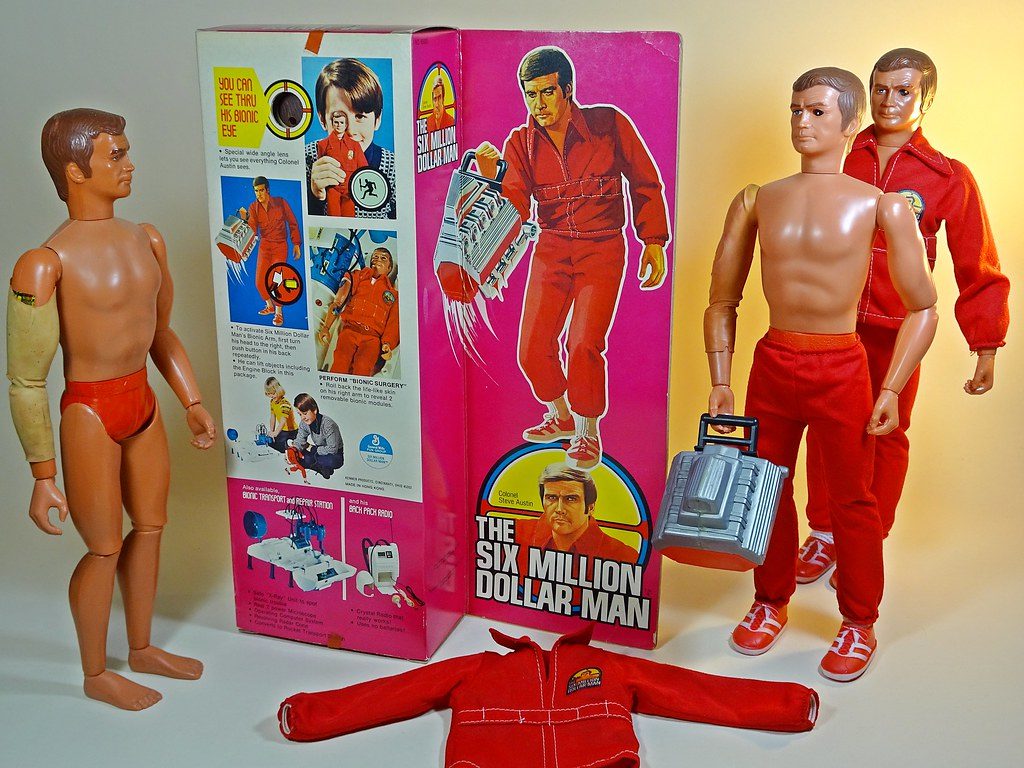
Bionic technology captivated TV audiences, and the 6 Million Dollar Man action figure brought the small screen hero into children’s hands with see-through limbs revealing his mechanical parts. This action figure had panels in his arms and legs showing his “bionic” components. Unique features allowed lifting objects and using telescopic vision, with panels opening to reveal technology inside. The figure encouraged imaginative play with bionic themes, though some components were fragile or prone to breakage. Popularity surged as the show dominated television views, contributing to the popularity of TV-based action figures. The toy fostered an interest in technology and how machines could work in conjunction with the human body.
9. Fisher-Price Chatter Telephone
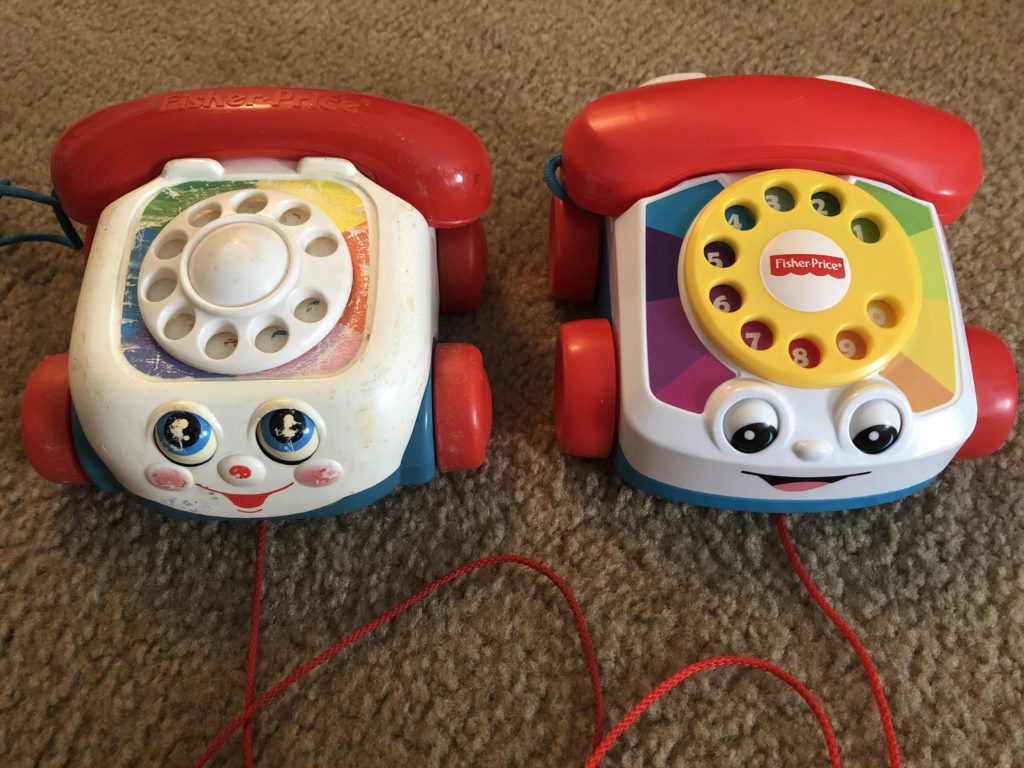
In an era when telephones were mysterious adult tools, the Fisher-Price Chatter Telephone democratized communication skills for toddlers with a toy they could pull along behind them. Designed as a plastic, colorful rotary phone, it encouraged toddlers to learn communication skills with its cheerful face and eyes that moved when pulled. While limited in educational content beyond phone skills and eventually replaced by more advanced toys, the Chatter Telephone was popular among parents for its educational value. The enduring design of this classic toy has remained popular for decades, outlasting many more technologically advanced competitors.
8. Play-Doh Fun Factory
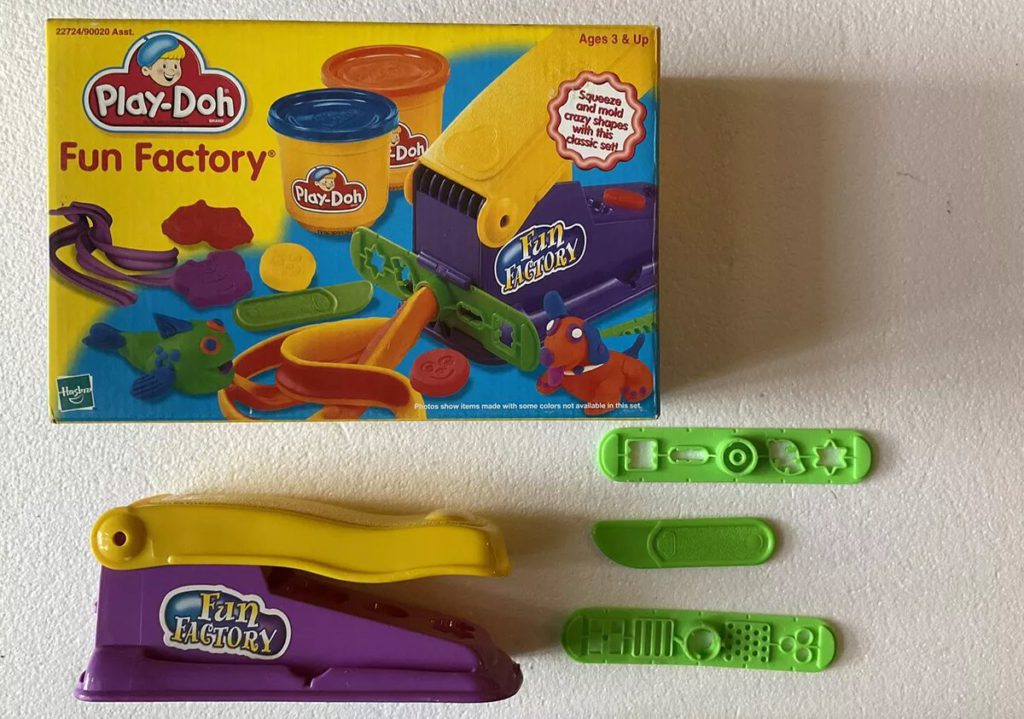
When children wanted to create their own food without the mess of real cooking, the Play-Doh Fun Factory stepped in with extrusion tools that turned colored clay into pretend meals. Kids placed the clay into the toy’s mold, then chose shapes from various templates to create all sorts of pretend food. It encouraged creativity and fine motor skills with multiple mold options, though it could be messy and was limited to specific designs. The blob of Play-Doh became delectable creations in this plastic factory, letting kids form everything from pretend spaghetti to fake hair. No child who grew up with Play-Doh can encounter that distinctive smell without being transported back to colorful childhood afternoons spent creating impossible food combinations.
7. Slinky Dog

Combining the hypnotic movement of a spring with the charm of a canine companion, Slinky Dog created a walking pet that never needed feeding or walks. This playful plastic dachshund with a slinky spring offered flexibility and interactive movement. Kids loved pulling it along and watching the middle stretch and compress as it walked. While some users reported it was fragile or prone to breakage, Slinky Dog’s popularity was later boosted by its appearance in the Toy Story films. Whether navigating stairs or simply stretching across the floor, Slinky Dog proved that sometimes the simplest toys provide the most enduring fascination.
6. Chemistry Sets
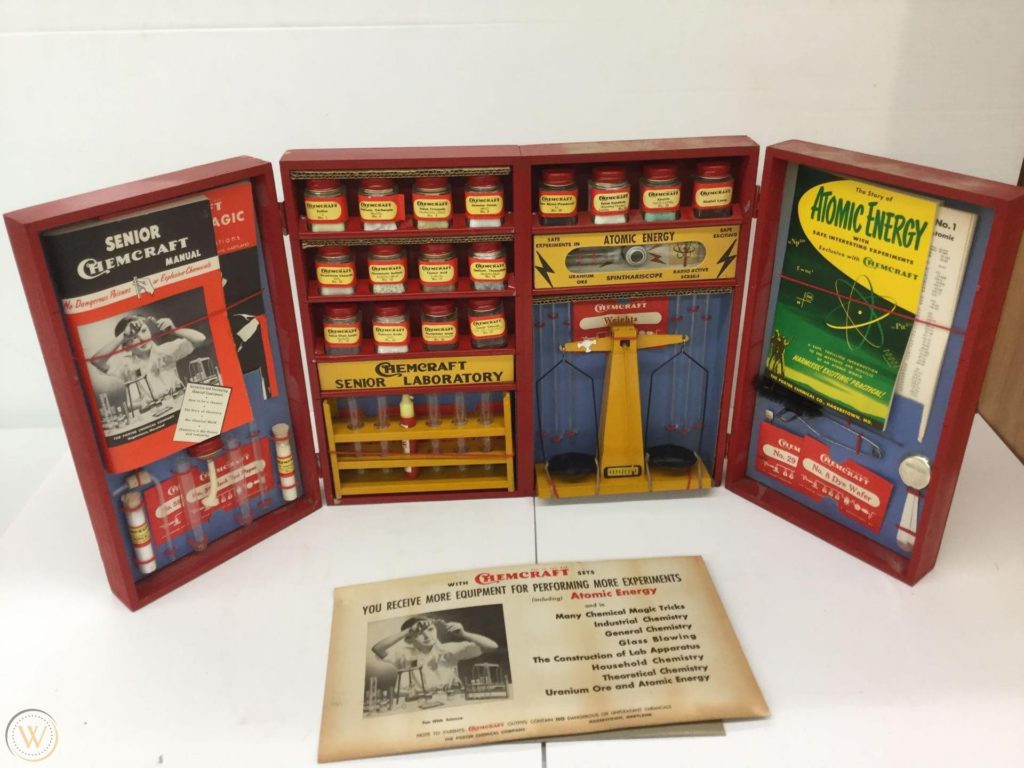
When science education needed a boost at home, 1960s chemistry sets answered the call with real chemicals that would shock today’s safety inspectors. These sets inspired curiosity and passion for scientific discovery, teaching kids the basics of chemistry with hands-on experiments. They included chemicals, test tubes, and Bunsen burners, making science accessible and fun. While safety concerns arose due to chemicals and equipment, with some sets criticized for lacking proper safety precautions, these kits remained popular among children for their educational value. For many future scientists and doctors, these potentially dangerous chemistry sets provided their first thrilling glimpse into how the world works.
5. 007’s Legendary Attache Case
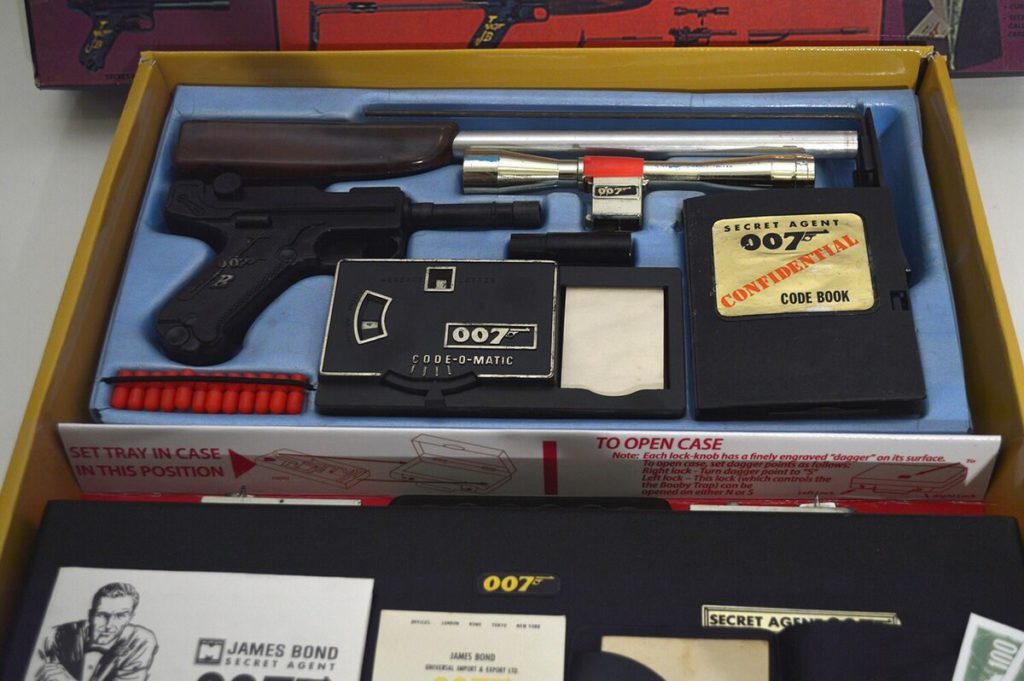
As Bond fever swept theaters, children who dreamed of secret missions found their ultimate spy toolkit in the 007 Attaché Case with its cleverly concealed gadgets. Based on the popular films, it included spy gadgets like fake currency, plastic ammunition, hidden knives, and a secret exploding compartment. It encouraged imaginative play with spy themes, though some components were fragile and posed safety concerns due to small parts. The spy craze influenced by 1960s movies and TV shows made this kit popular among children dreaming of secret missions. Even ordinary trips to the grocery store became covert operations when equipped with this attaché case, turning mundane errands into international espionage adventures.
4. Hot Wheels Track Set
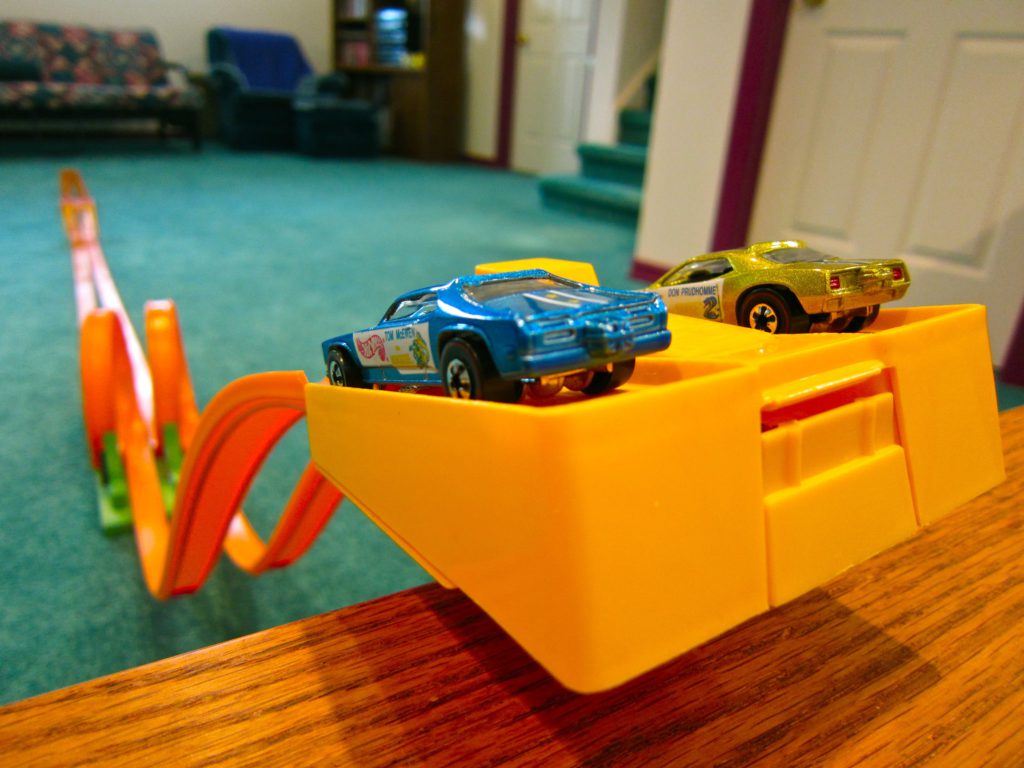
Taking die-cast cars beyond simple rolling play, Mattel’s Hot Wheels tracks turned living rooms into miniature speedways with loops, jumps, and racing action. This groundbreaking racetrack appealed to children of all ages with highly dynamic customizable tracks. Bright orange pieces could be configured into ramps, loops, and straight paths for die-cast cars, delivering hours of racing entertainment. While some users reported tracks were fragile or had limited compatibility with certain cars, Hot Wheels tracks became highly successful and influential in toy history. The combination of speed, crashes, and creative track building kept kids entertained for hours while parents stepped gingerly around orange track pieces spread across the floor.
3. Matchbox Cars
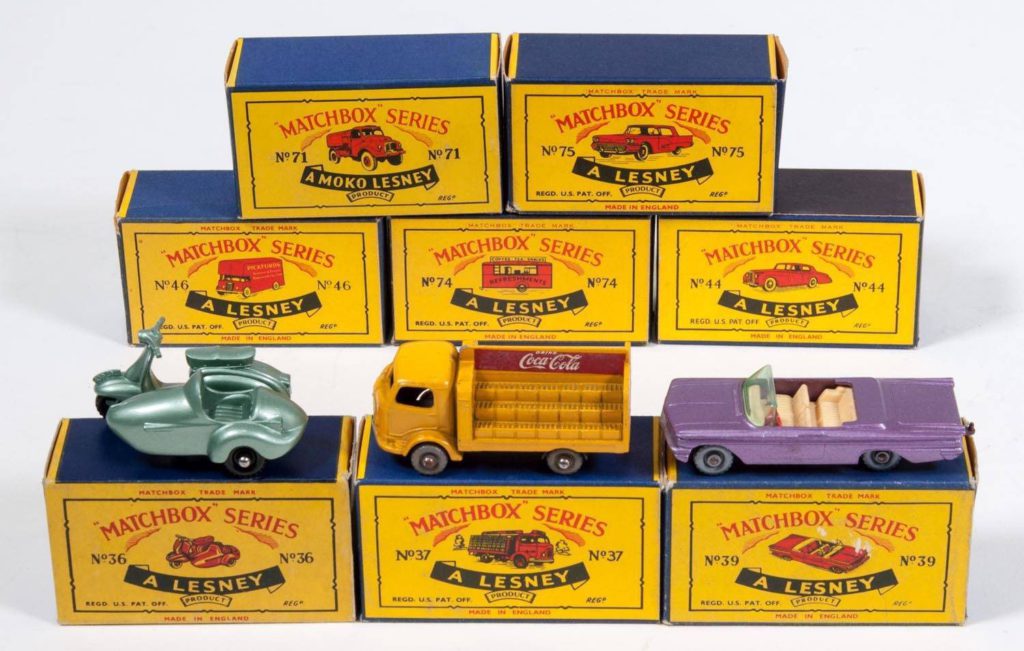
Before toy garages became elaborate plastic cities, Matchbox cars offered pocket-sized adventure with die-cast precision that fit in a child’s hand. Introduced by Lesney Products in 1953, these small die-cast metal cars fit inside a matchbox, hence the name. Known for their affordability, detail, and realism, Matchbox became the leading brand for die-cast cars globally by the late 1960s. The introduction of Superfast wheels helped them compete with Hot Wheels, though the company eventually faced financial struggles in the 1970s. Their pocket-sized dimensions made them the perfect school contraband, with many math lessons interrupted by the quiet rolling of Matchbox cars between desks when teachers weren’t looking.
2. Secret Sam Spy Kit
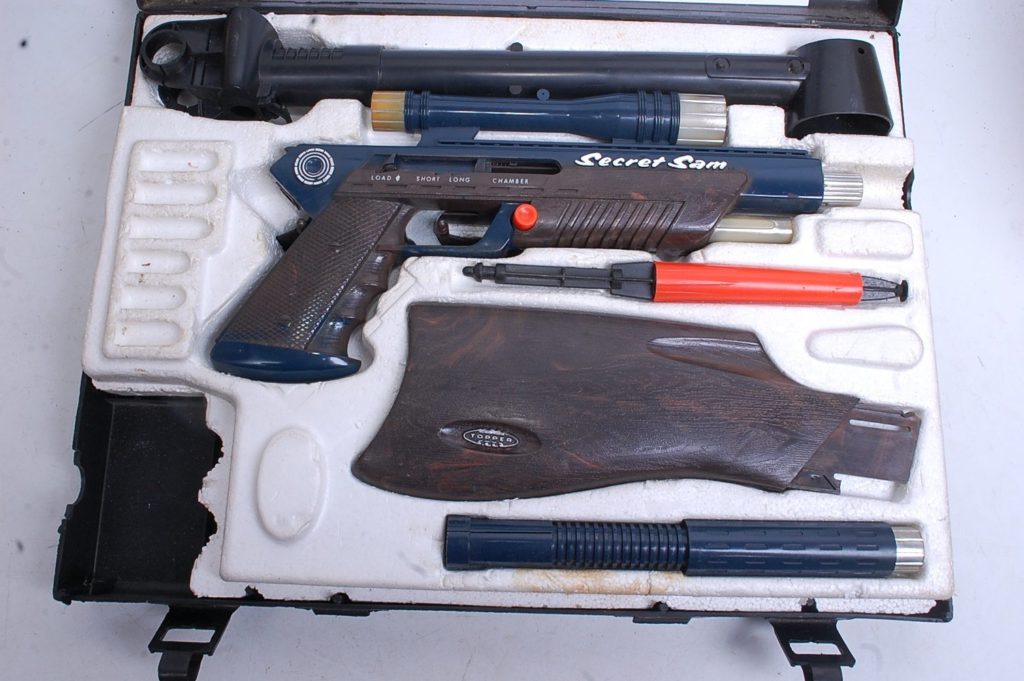
With Cold War tensions at their height, the Secret Sam Spy Kit turned ordinary children into neighborhood intelligence agents with a briefcase full of covert tools. Introduced by Topper Toys in the mid-1960s, this briefcase concealed gadgets for junior spies, including a spring-loaded pistol, detachable stock and barrel, silencer, and working camera. It was innovative for its time, offering a range of hidden tools that let kids conduct surveillance operations on unsuspecting family members. Popular during the spy craze influenced by James Bond and The Man From U.N.C.L.E. The toy’s success revealed how deeply Cold War culture had penetrated American childhood, with international espionage themes normalizing surveillance concepts for an entire generation.
1. Batmobile Model Kit
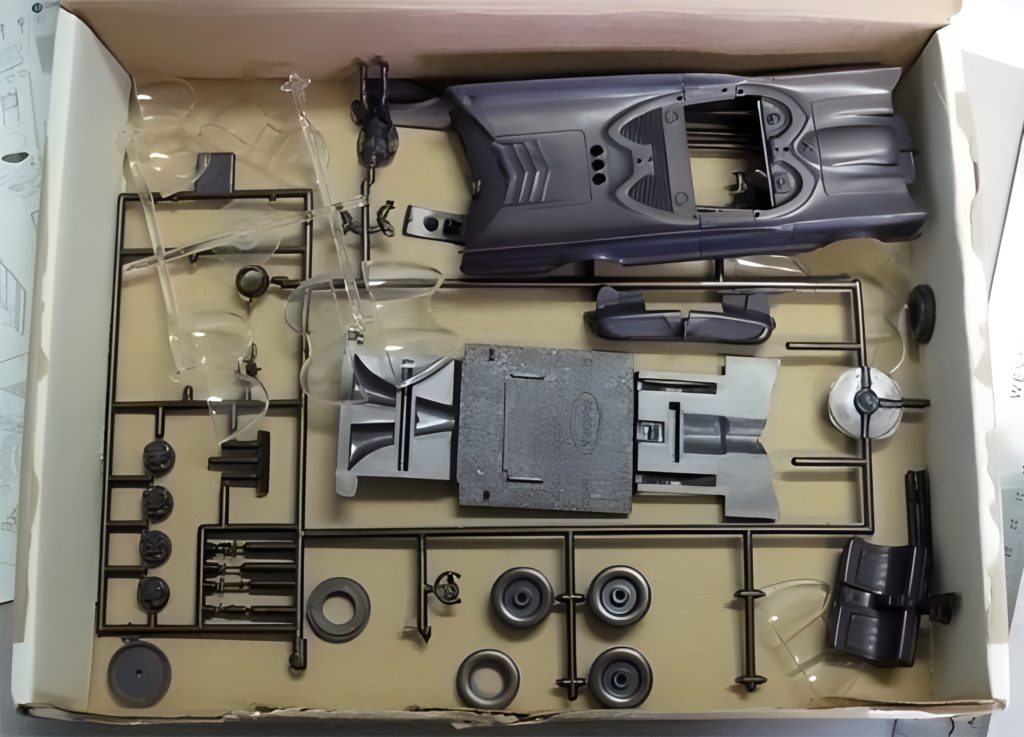
When the Batman TV show created instant fans in 1966, model kits of the iconic Batmobile gave them a hands-on way to bring the Caped Crusader’s vehicle home. These kits let fans build their own version of Batman’s ride, complete with Batman and Robin figures. The kits allowed fans to recreate the iconic vehicle, fostering creativity and engagement with the Batman franchise. Vintage or rare editions now have significant collector value, with modern versions still being produced and collected. Building these kits taught children patience and attention to detail, as they carefully assembled their own miniature version of TV’s most recognizable car.


